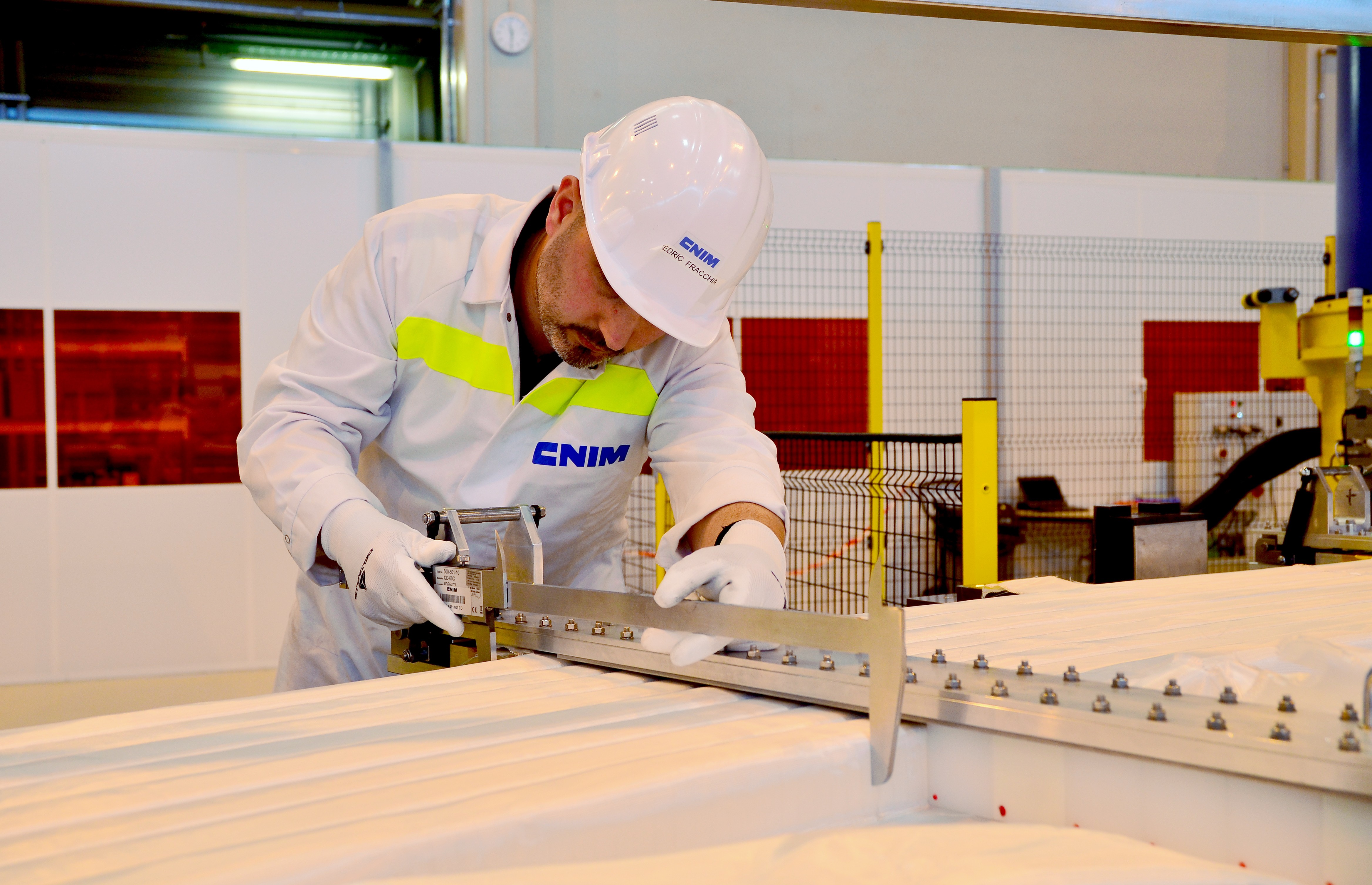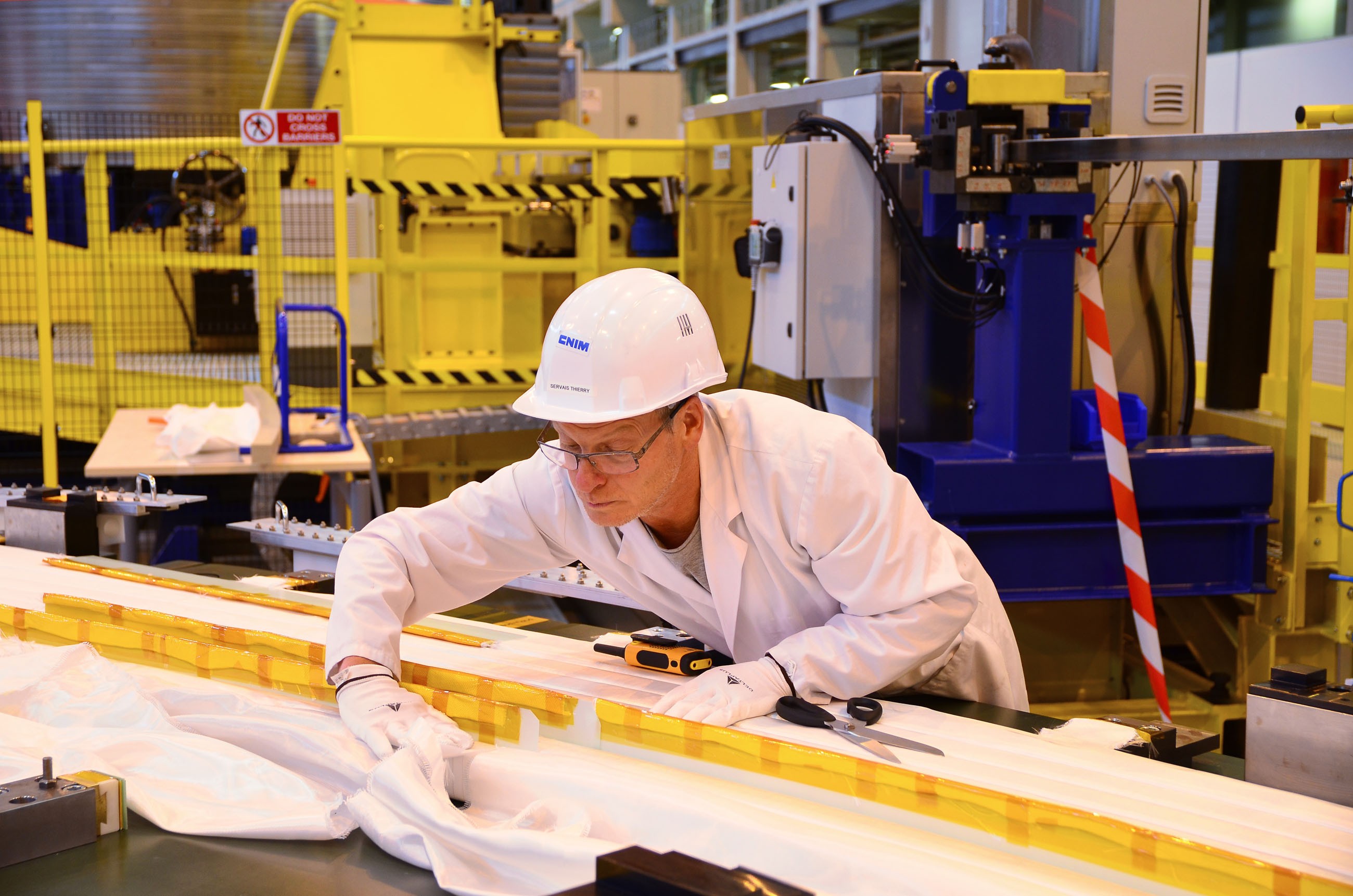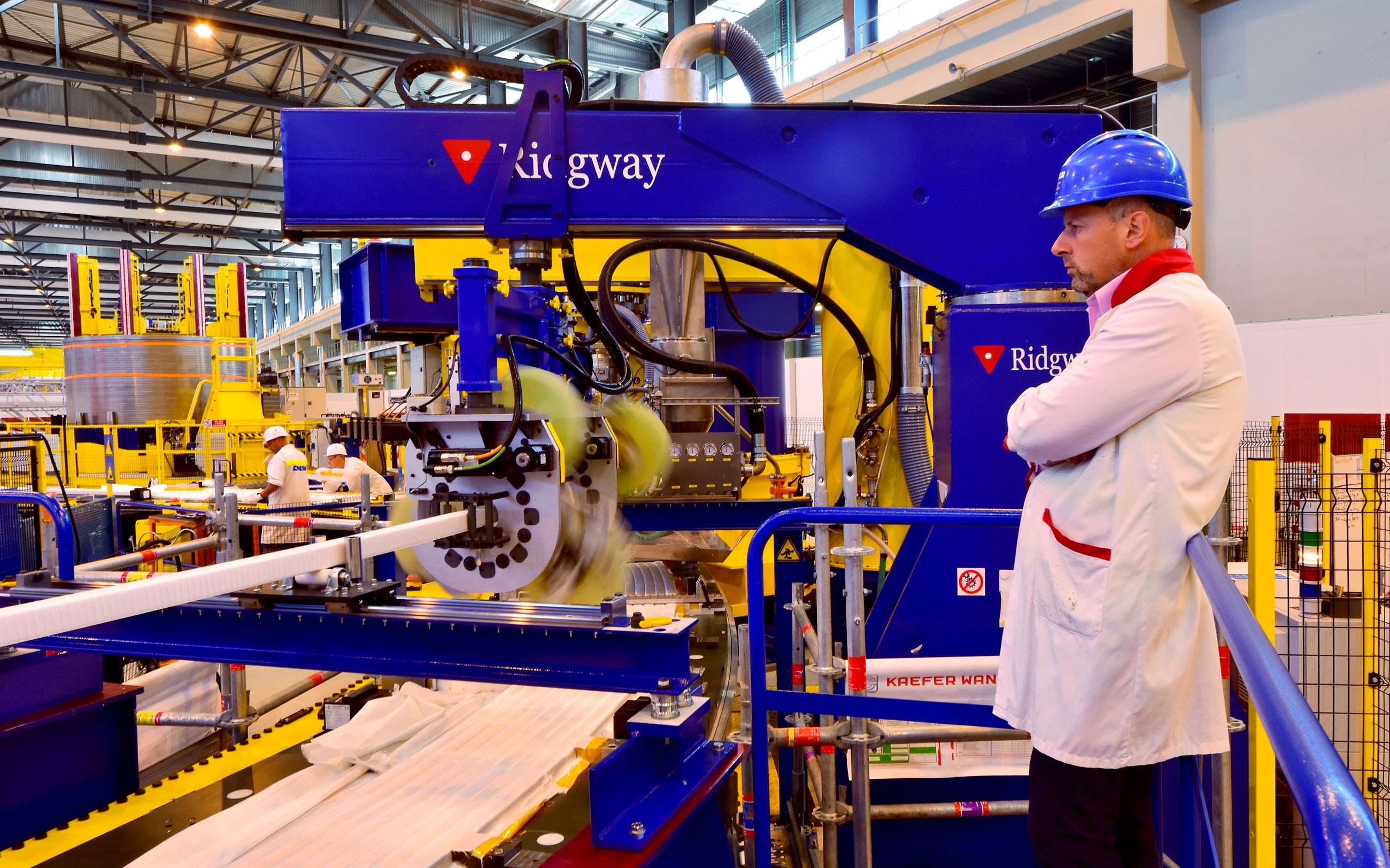And now, it's for keeps!
At first view, nothing distinguishes the current operations in the Poloidal Field Coils Winding Facility from those that got underway last November: steel-jacketed conductor is being unspooled, straightened, cleaned, bent to the correct angle, and wrapped with layers of insulating tape ... technicians in white lab coats are carefully performing dimensional checks ... and there is the same machine hum and flash of orange lights.
Although invisible to the eye, the difference is nonetheless essential—this time it is not "dummy" conductor on the winding table but the actual niobium-titanium (Nb-Ti) superconductor for poloidal field coil #5 (PF5). Measuring 17 metres in diameter, PF5 will be the second ring coil to take its place in the Tokamak assembly sequence, just above the smaller poloidal field coil #6.
See a recent report from the European Domestic Agency on fabrication activities for poloidal field coils #5 and #6 here.







